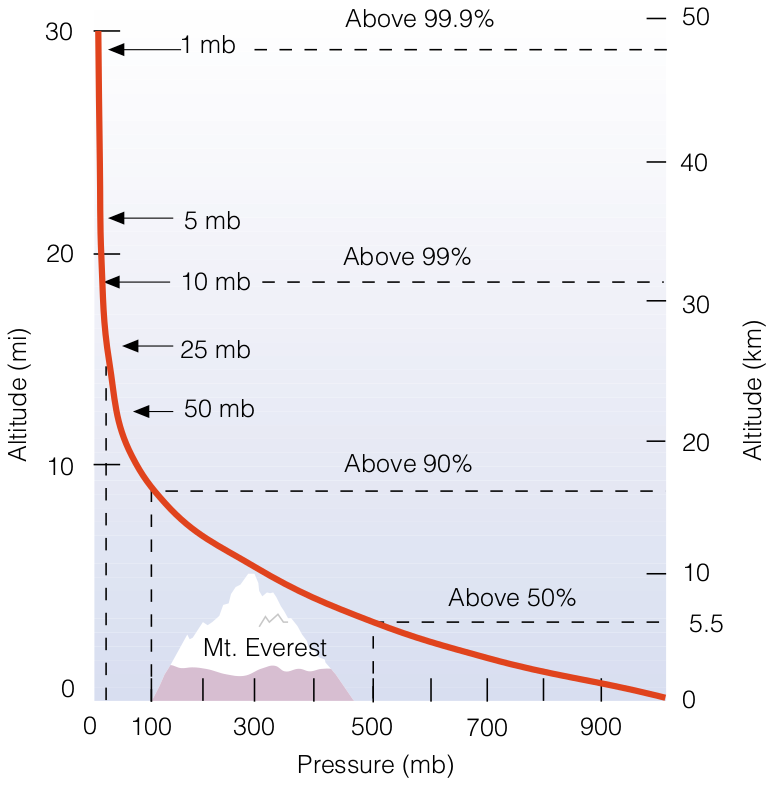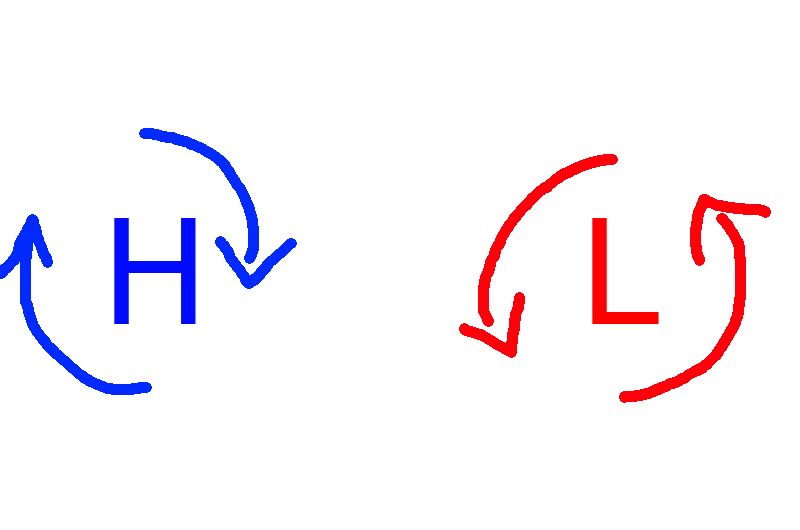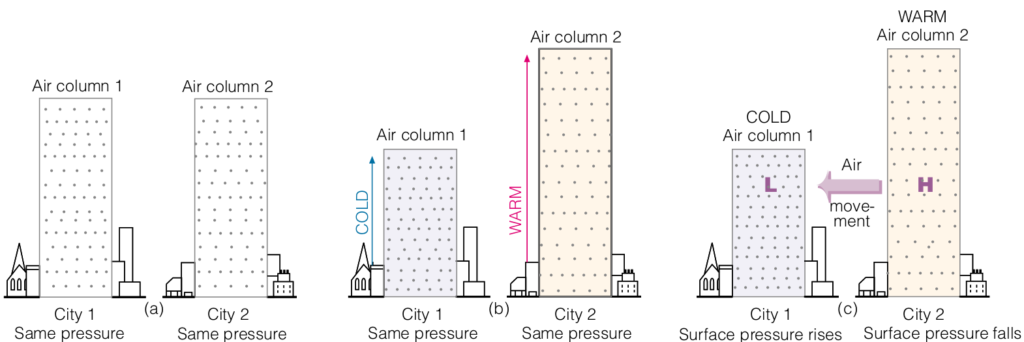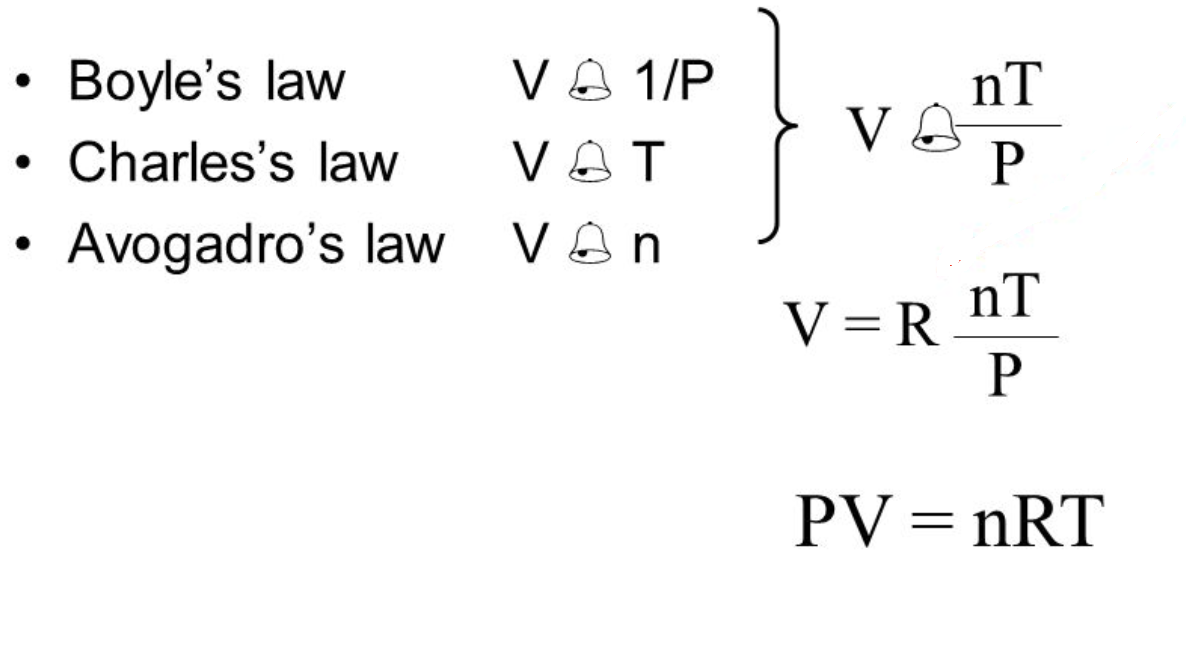Introduction: Atmospheric pressure is a key player in the world of meteorology, shaping weather patterns and influencing our daily lives in ways we might not even be aware of. In Part 5 of our weather education series, we’ll delve into the fascinating realm of atmospheric pressure, exploring what it is, how it’s measured, and its profound effects on weather systems.
Understanding Atmospheric Pressure: Atmospheric pressure, often referred to simply as “pressure,” is the force exerted by the weight of the air above a given point in the Earth’s atmosphere. It’s measured in various units, with millibars (mb) and inches of mercury (inHg) being common in weather reports. You are probably already familiar with hearing “millibars” along the Gulf Coast, as every hurricane season it is how we measure a tropical system’s strength!
Pressure and Altitude: One fundamental concept to grasp is that atmospheric pressure decreases with increasing altitude. At higher elevations, there are fewer air molecules above, so the pressure is lower. This principle is critical for understanding various atmospheric phenomena. We discussed this earlier in our “atmosphere” post!

High and Low-Pressure Systems: Atmospheric pressure systems are divided into two main categories: high-pressure systems and low-pressure systems.
- High-Pressure Systems: High-pressure areas are characterized by denser air, resulting in higher atmospheric pressure at the surface. In these systems, air descends and spreads outward, leading to stable and generally fair weather conditions. High-pressure systems are often associated with clear skies. In the Northern Hemisphere, air moves around high pressure clockwise
- Low-Pressure Systems: Low-pressure areas feature rising air, resulting in lower atmospheric pressure at the surface. In these systems, air converges and ascends, leading to the formation of clouds, precipitation, and potentially stormy weather. Low-pressure systems are often associated with cloudy and rainy conditions. In the Northern Hemisphere, air moves around low pressure counter-clockwise

Measuring Atmospheric Pressure: Atmospheric pressure is typically measured using a device called a barometer. There are two main types of barometers: mercury barometers and aneroid barometers. Mercury barometers use the height of a column of mercury to indicate pressure, while aneroid barometers use a flexible metal box. The mercury barometer was invented by Evangelista Torricelli, an Italian physicist, in 1643. The aneroid barometer was invented by Lucien Vidi, a French engineer, in 1844.

The Impact of Atmospheric Pressure on Temperature and Weather: Here is a neat example – two cities have rectangular bubbles placed around them. Both cities, City 1 and City 2, have similar pressure. And because the rectangular bubbles are the same size, it means they have a similar temperature, too!

That is because of the Ideal Gas Law: PV = nRT
But what if we started to warm up one of the rectangular bubbles? Because in PV = nRT “P” is on one side and “T” is on the other, we can’t change one without it changing the other. So, in order to maintain the same pressure, we would have to stretch one of those rectangles? And make it taller (or wider, but for this example, lets go taller).
Meteorologists use this principle when looking at weather maps. When there are “higher heights” it means temperatures are warmer. And when there are “lower heights” it means temperatures are cooler. And meteorologists showcase this on “Height Anomaly Maps” which show where the heights are relative to normal.

Monitoring atmospheric pressure plays a crucial role in shaping weather forecasts. Changes in pressure are closely associated with the movement of air masses, the development of weather fronts, and the formation of storms. Meteorologists use pressure readings to predict weather conditions and understand the dynamics of the atmosphere.
Take Home: Atmospheric pressure is a fundamental concept in meteorology that affects everything from daily weather forecasts to long-term climate trends. Understanding the dynamics of high-pressure and low-pressure systems is essential for comprehending weather patterns and predicting the weather accurately.
In our next post, we’ll explore cloud formation, shedding light on the different types of clouds and the processes that lead to their creation. If you have any questions or topics you’d like us to cover in this series, please feel free to reach out. Stay curious, and stay tuned for more weather insights!

